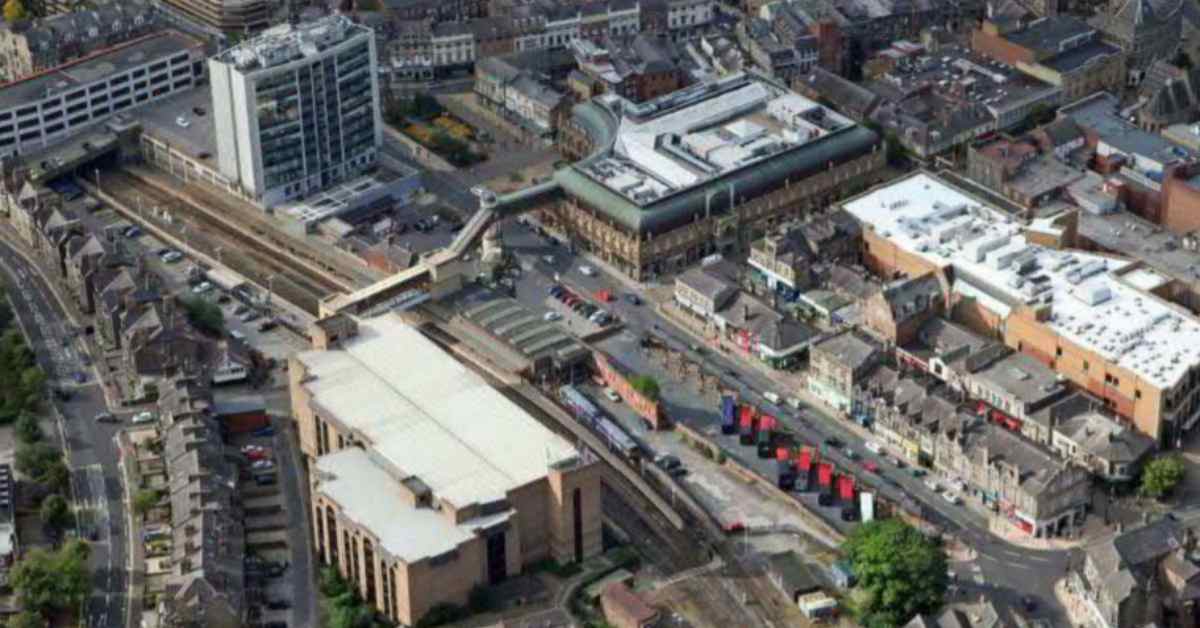A report by consultants on the proposed £7.9 million Station Gateway project in Harrogate has found it could potentially increase greenhouse gas emissions.
The gateway project aims to improve town centre accessibility, particularly for pedestrians and cyclists, and help to achieve a net-zero carbon goal.
But net carbon emissions could increase because the reduced traffic flow in the area affected by the scheme would force some drivers to take longer alternative routes.
North Yorkshire County Council said this would represent a “worst-case” scenario, and it would refine the scheme to ensure it is environmentally friendly.
The report also highlighted the loss of up to 15 trees. They would be replaced by new trees within the scheme area at a ratio of at least one replacement for each tree lost.
In addition, there would be a net loss of parking spaces in Harrogate town centre. The scheme would, however, maintain or increase the number of disabled parking bays in the centre.
Under all versions of the scheme examined, the bandstand at the north end of Station Square would be removed, while the Jubilee memorial on the south side would remain in place. Other improvements include a proposed water fountain and ornamental planters.
Read more:
- Harrogate cycle groups back one-lane Station Parade plan
- Businesses warn £7.9m Station Gateway project could be “hugely damaging”
Environmental impact
The report is a preliminary study prepared by WSP, a consultancy firm.
It aims to provide information to North Yorkshire County Council and Harrogate Borough Council, which are developing the Station Gateway scheme, about the potential environmental impacts.
Council planners will use this information to determine whether a formal environmental impact assessment is needed.
The report assesses three different options:
- “Do minimum” scenario, in which two-lane traffic is retained on Station Parade and James Street remains open to traffic.
- “Do something” scenario, in which Station Parade is reduced to one lane for general traffic, while James Street is pedestrianised outside of peak hours.
- “Do maximum” scenario, in which Station Parade is reduced to one lane and James Street is fully pedestrianised.
The report forecasts that under the “do maximum” scenario improvements to pedestrian, cycling and public transport infrastructure will encourage a shift away from car use, with a reduction in carbon dioxide emissions of 1,113 tons over 60 years.
However, at the same time reductions in traffic capacity will force vehicles to take longer alternatives, which is predicted to lead to an increase in carbon emissions of 2,576 tons of CO2 over 60 years.
This suggests that the net impact of the scheme will therefore be an increase in emissions of CO2 of roughly 1,400 tons over 60 years. To put this into context, the average UK citizen produces roughly five tons of CO2 per year.
The report notes that:
“…the transformational change from the scheme has the potential to unlock further behavioural change and growth than modelled, in which case emissions reductions may be larger.”
There is no forecast of the change in carbon emissions under the “do something” or “do minimum” scenarios.
More detailed proposals to come
Karl Battersby, corporate director of business and environmental services at North Yorkshire County Council, said:
“At this early stage of development, it is prudent to consider a worst case scenario. It is that modelling that informs the screening request. This worst case shows that at this stage there is potential for a slight adverse carbon emissions impact.
“However, further detailed design will focus on achieving a net-zero position and we will present a more refined carbon assessment when detailed proposals are recommended for implementation.”





